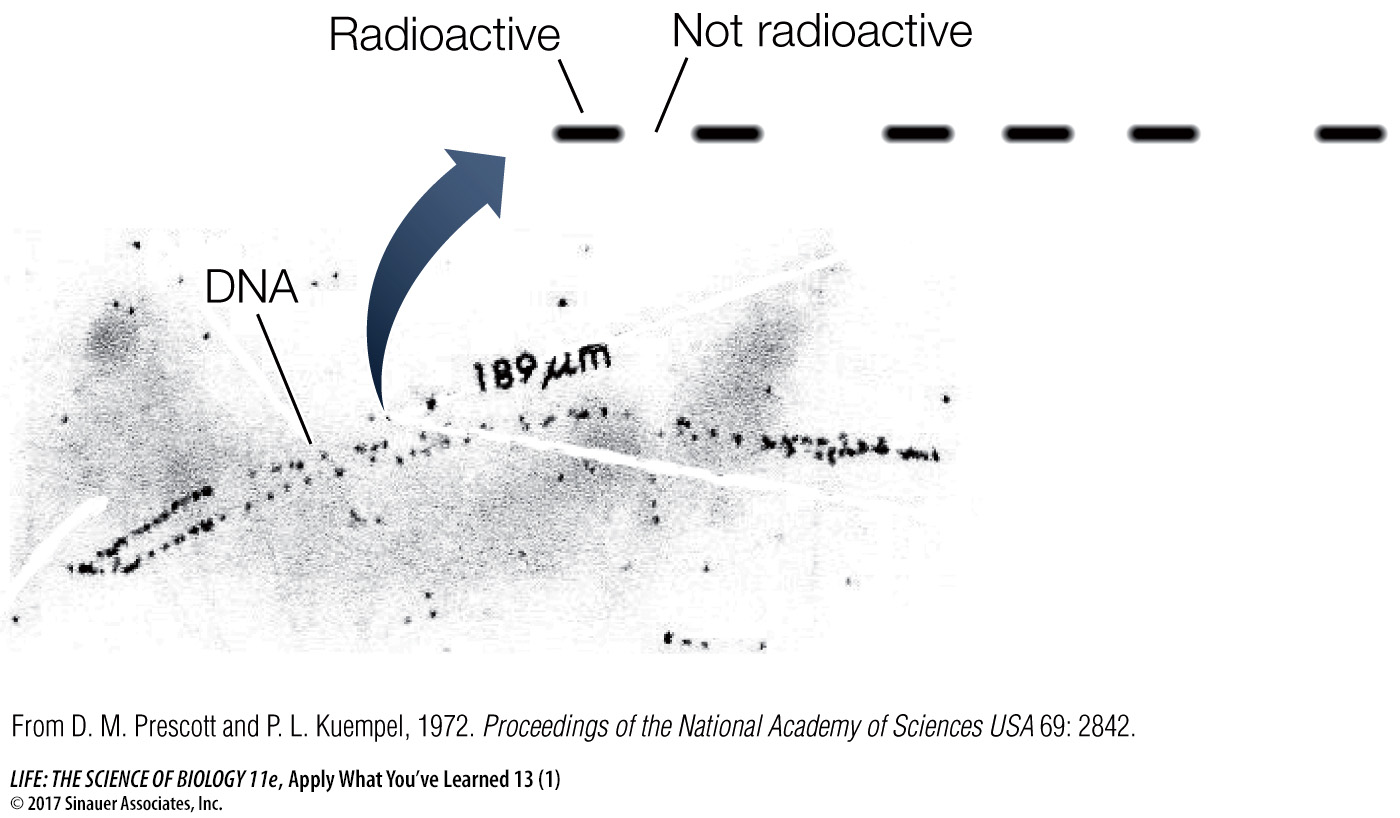Apply What You’ve Learned
Review
13.3
DNA replication proceeds bidirectionally from an origin of replication (ori); E. coli has a single ori, and eukaryotic chromosomes have multiple ones.
Original Paper: Huberman, J. A. and Riggs A. D. 1968. On the mechanism of DNA replication in mammalian chromosomes. Journal of Molecular Biology 32: 327–
Biologists use a variety of methods to develop hypotheses about living systems. A mathematical approach, for example, can help you learn about DNA replication in human cells.
DNA replication is not an ongoing process in cells but is restricted to the S phase of the cell cycle. Typically, in dividing mammalian cells, S phase is 8 hours long. The rate at which DNA polymerase links nucleotides to form a new strand of DNA is about 50 base pairs per second. The shortest chromosomal DNA in a human cell contains approximately 50 × 106 base pairs; the longest chromosome contains approximately 250 × 106 base pairs.
Questions
1.
Using the information above, calculate how long will it take a single DNA polymerase to replicate the entire DNA molecule in the shortest chromosome if it starts at one end of the DNA molecule and proceeds uninterrupted to the other end. Compare this to the 8 hours that the cell has to complete its DNA replication. Do the results suggest that DNA replication involves just one starting point, or do they point to an alternate hypothesis?
Now consider the results from an investigation. As you know, thymine is one of the four bases in DNA. In the lab, scientists can replace the normal isotope of hydrogen (1H) with the radioactive isotope (3H) in thymidine, the nucleotide containing the base thymine. If dividing cells in S phase are given all four nucleotides, but with 3H-
It will take about 280 hours to complete the synthesis of the shortest DNA strand from one starting point. This is much longer than the 8 hours that the cell has to complete DNA replication, so no one can claim that DNA replication involves just one starting point. The results of the calculation suggest that multiple starting points must be involved in replicating a strand of DNA.
2.
The diagram below shows radioactivity for a small segment of a single DNA strand extracted from human S phase cells after a pulse with 3H-

What can you conclude about the number of starting points on a single DNA molecule? Is this consistent with your results in question 1?
In a second experiment, the cells were given a pulse with 3H-

The results suggest that multiple starting points for synthesis are present in a single DNA molecule. The number of starting points corresponds to the number of radioactive bands. This result is consistent with the hypothesis made based on the calculations in Question 1.
3.
Was DNA replication unidirectional or bidirectional from its starting point? Explain your answer.
The results suggest that DNA synthesis is bidirectional. This is shown by the presence of two dark patches running 180 degrees from each starting point of synthesis, followed by lighter patches indicating a period of dilution during the change from radioactive to nonradioactive thymidine. If DNA synthesis were unidirectional, we would see single dark patches followed by lighter patches to either the left or the right but not in both directions.
4.
Draw the double-
